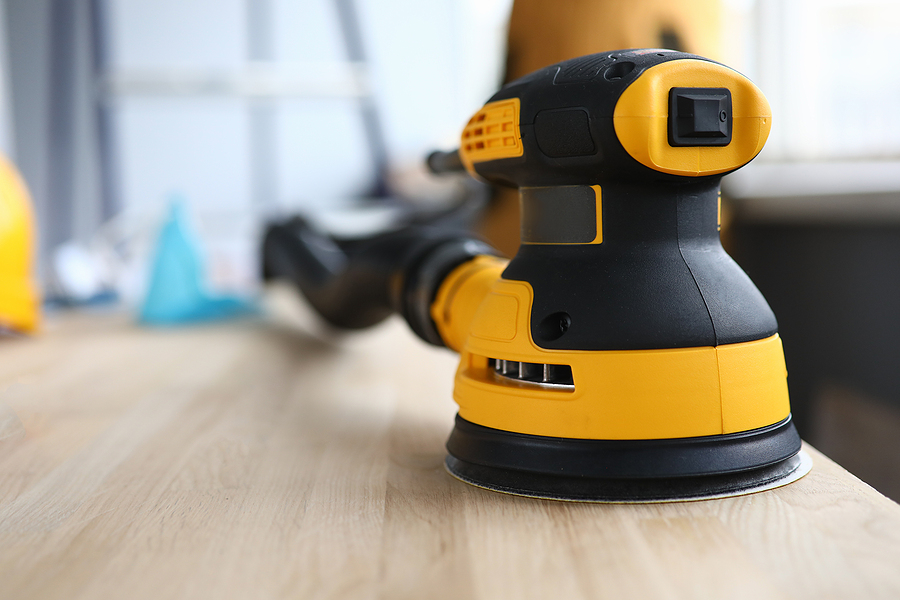If you are a homeowner of a house with old timber floors, then you have an asset waiting to be brought back to its former glory.
Hardwood floors were popular in decades past, with the accessibility to hardwood being a lot easier and economical back then. These days, hardwood flooring is not readily available to homeowners therefore when you purchase an older home, you may want to look under that old carpet or vinyl to see what is lying underneath.
Not surprisingly, hardwood flooring is a desirable feature in a house. The beautiful sheen from a varnished floor, the easy nature of the material to keep clean, timber flooring is both functional and aesthetic.
If you are planning on sanding your floorboards by DIY methods, preparation is the key. You will thank yourself many times over that you took the time to prepare the room, gather all the equipment and clean your floors properly prior to applying the varnish.
In this article we discuss the essential steps in a successful DIY floor sanding project:
-
Prepare the room
Having a clear, empty room to start with is essential. Remove any furniture, artwork or anything that is in the space, remember that the more things you have in the rom you will be sanding in, the more things you will have to clean!
Move all furniture including fixed furniture if possible. It is worth the time and effort to remove fixed furniture because you will get an even result across the entire room, especially if you are thinking of selling your home, to have a blank canvas is best.
Once you have an empty room, it is now time to divide and protect the rest of the house. Assuming you are not sanding the entire home and that your flooring is only in one room, you need to separate the area from the rest of the house using a plastic sheet and tape, making a tight seal so that no saw dust escapes and makes the rest of the house dusty.
Next you will need to make sure there are no rotten floorboard that need replacing. Especially prone in wet areas such as bathrooms ad kitchens, make sure all wood panels are in good condition, and it they are not, make a list of how many floorboard with measurements you will need to replace.
Next you will need to punch in any nails that are sticking out, so that each nail is approximately 2mm below the surface of the wood. This step is vital in protecting the sanding equipment that you will hire. Not only could you seriously damage a drum sander with a nail, but you will also rip through many more sandpaper sheets than you need to!
-
Hire the right equipment
With your room prepared for the sanding to begin, it is time to go out and hire the right equipment. We recommend you prepare the room for sanding before hiring the equipment because you are often hiring by the hour and preparing the room can be a time-consuming project.
The equipment you will need to hire from a hardware store includes:
- A drum sander
- An edger
- A nail punch (if you don’t already have one)
- An effective vacuum cleaner
- Your personal protective equipment (PPE) including mask, eye goggles, earmuffs and sturdy shoes
When you go to your local equipment hire place, ask the staff about how many sandpaper rolls you will need for your project, have with you the measurements of your room or rooms and take some photos of the floor boards. If you are particularly concerned about the condition of your floor boards and don’t know how many you need to replace, get a company that have floor sanding contractors that come to your home and have a look, they will be able to advise you what they would recommend to get the best outcome.
Once you have gathered the equipment, you are now ready to start sanding. This guide is focused on the preparation and process that allows a floor sanding project to be a success, for information on how to sand a floor itself, you will need to research the different grit papers and the process online or by asking staff at the local hire shop.
-
Be ready for the clean up before the varnish
Allocate plenty of time for the clean up because the end result of the appearance of the varnish will require a clean dust free floor for the best outcome. In the process of sanding, you may need to vacuum the sawdust in between sandpaper changes, depending on how much sanding needs to be done. Once you have sanded the floor with your drum sander and edger with the appropriate grit sandpaper, and you are happy with the finish, it is now time to clean up.
Using your effective vacuum cleaner, gather all the dust from the ceiling, walls, windowsills and floor, with special attention to gather the dust from in between the floorboards. There are many attachments that you can use, we recommend one that uses high suction with a narrow edge to really get in between and clean out any remaining dust.
Once dust free, you may take the optional step to wipe the timber surface with mineral spirits to get the last of the dust and make sure it is oil free before applying the varnish.
Conclusion
This guide was aimed at giving you an overview of the preparation and steps, the main step that cannot be overlooked is in the preparation phase. Be prepared and allocate plenty of time for your DIY sanding project and not only will you get a better outcome but you will enjoy the process that much more.


